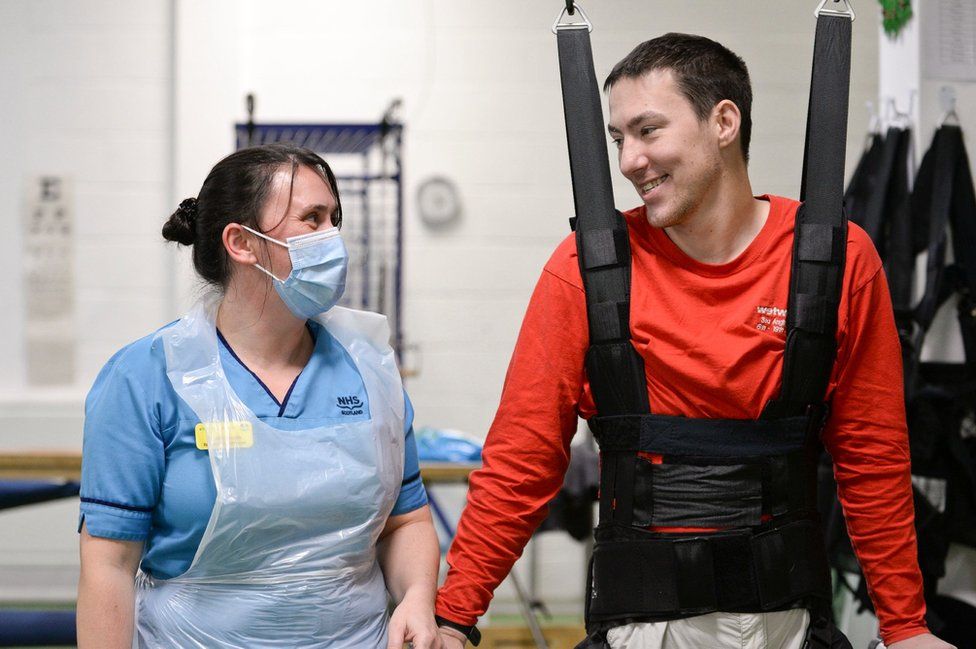 PA Media
PA MediaA man who was left paralysed after a crash is now dreaming of walking his daughters down the aisle after receiving innovative robotic therapy.
Luke Louden, 32, suffered a broken neck and back, alongside multiple serious leg injuries, in August 2020.
For more than two years the dairyman was forced to contemplate that he would never walk again.
But a new type of therapy at the Queen Elizabeth National Spinal Injuries Unit in Glasgow has given him fresh hope.
- TV presenter Matthew Bassett shows life goes on with spinal injury
- Paralysed girl gets pioneering rehab to walk again
Mr Louden, from Whauphill in Dumfries and Galloway, said he “knew instantly” after the accident that he was paralysed.
“The doctors didn’t say there was no chance of walking but they said there was a slim chance, ” he said.
But a seemingly unrealistic prospect has now started to become a reality after he became the first patient to receive new therapy.
He said: “Quite quickly I began to feel the benefits, and now there’s less pain, fewer spasms, I sleep better and I have lost weight.
“It’s also been huge for my mental health.”
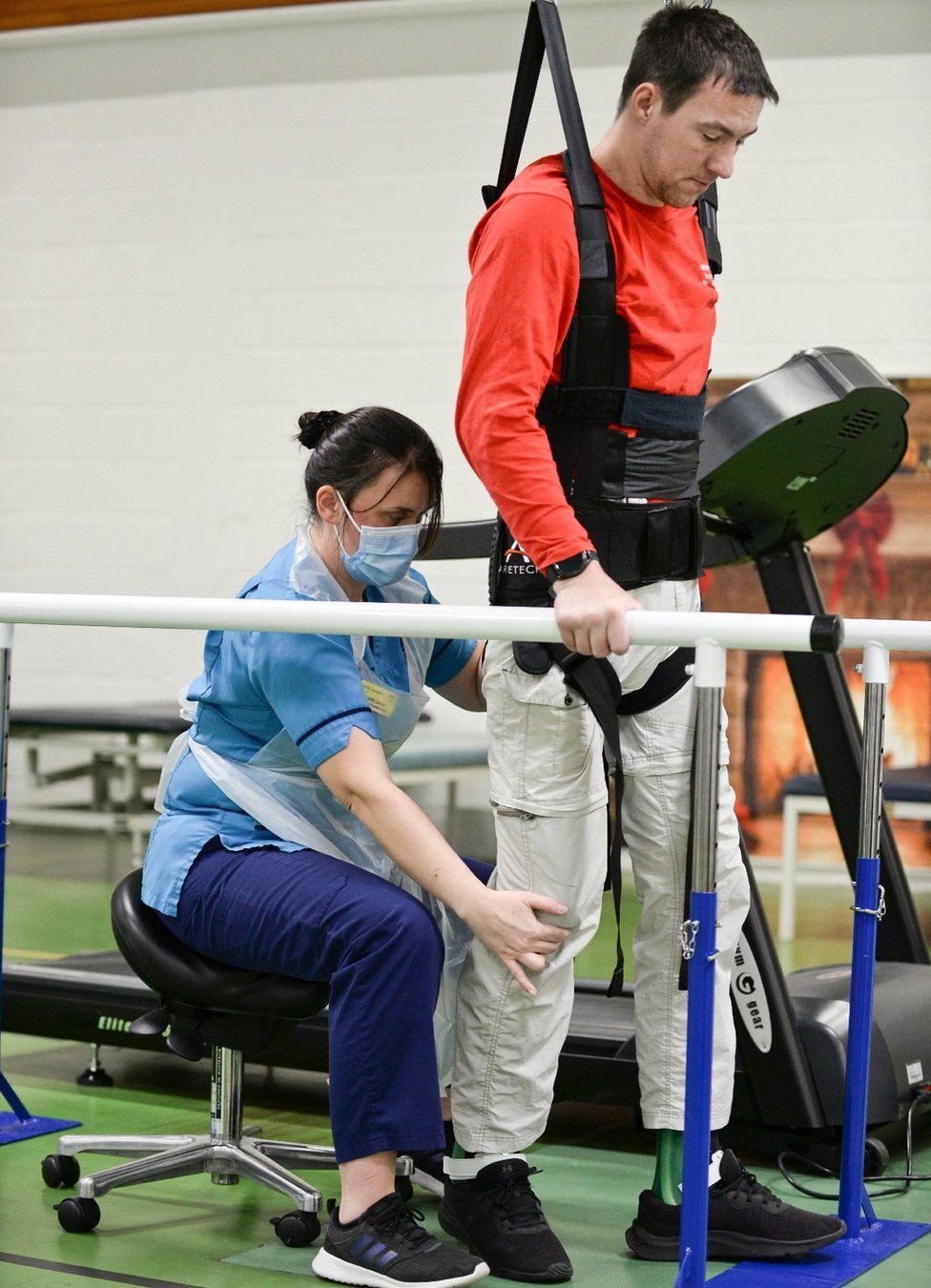
Mr Louden’s wife Anna and children Anna, eight, Chloe, six, Mary, four, and three-year-old Isaac have been his inspiration throughout his ordeal.
“They have kept me going – especially my wife,” he said.
“I don’t know how I would have managed without her. I’ve had some really dark times, but now I can look forward with real hope.
“The dream would obviously be to walk my girls down the aisle, so I’m going to keep going, to keep trying, for Anna and all my children.”
Mr Louden is also confident further advances are round the corner.
‘I could feel my hope just draining away’
He added: “Don’t get me wrong, it’s been tough and the future is daunting, but the team here have been amazing, and I know they’ve got my back.”
Before starting his therapy Mr Louden said he was putting in so much work but seeing no return.
As a result he admitted: “I could feel my hope just draining away”.
But the ZeroG Gait and Balance System, which NHS Greater Glasgow and Clyde said is the first of its kind in Scotland, has proved to be transformative.
Mr Louden said: “It was really hard at the start, and I didn’t really know what to do. I was really fit and active, so to lose the use of my legs was tough.”
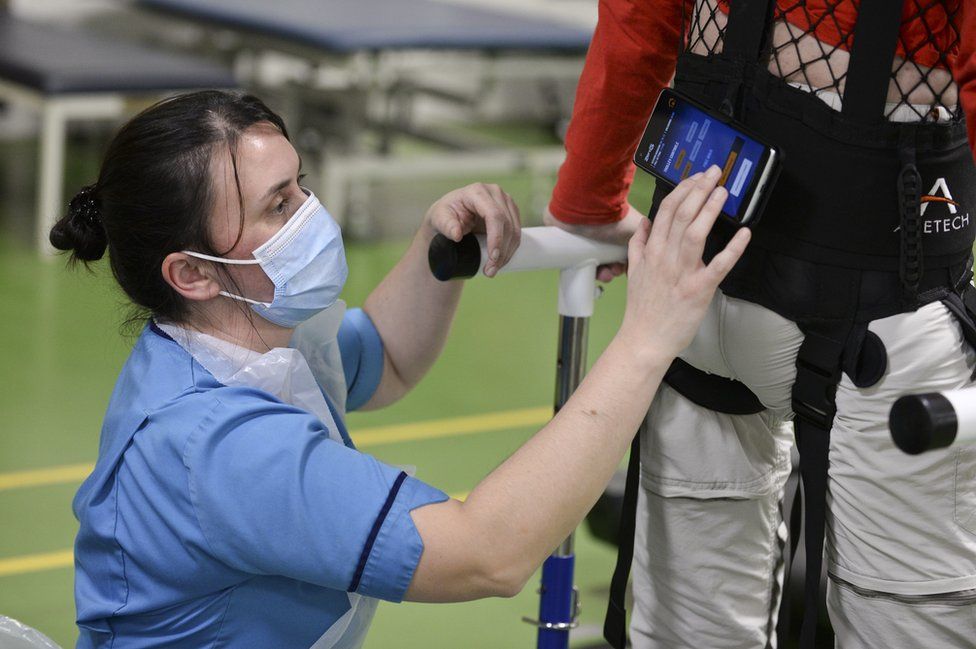
Last September he started using the robotic apparatus, which supports him during therapy and automatically synchronises with his movements, to help him walk and prevent falls.
Mr Louden said: “I’ve gone from hardly being able to move to being able to walk 20 metres non-stop on the bars. My record on the ZeroG system is 57 metres.
“I’d love to keep improving but to be honest, if I couldn’t achieve any more I’d be happy the way I am. Just to be able to stand, even if it’s with a frame, is amazing.”
“If you’d asked me six weeks ago if I could even achieve that I’d have said don’t be daft. But now I can stand next to my kids.”
‘We are still learning’
Claire Lincoln, senior research physiotherapist at the hospital, said patients using the machine could do a lot more before becoming too tired.
She added: “The system also allows us to be more creative with the activities we undertake, which means the patient gets more enjoyment and satisfaction while also seeing additional benefit.”
“We are still learning the full potential of the system, but because of the support and added safety it gives patients, already it’s allowed us to try therapies earlier than would have been possible before.”
- The latest headlines from Scotland
Dr Mariel Purcell, consultant in spinal injuries, said that since he started his career 30 years ago more patients now had the potential to get back on their feet.
He said: “We used to see a lot of young males, who had perhaps been in a car crash or suffered an industrial accident, but the advances in safety – seatbelt wearing and health and safety laws – have made a real difference.
“Now we are seeing damage that isn’t as bad, and we’re seeing older patients who have experienced lower-velocity injuries.
“This gives us a real chance to help these patients, and the ZeroG system will be instrumental in this work.”
-
TV presenter shows life goes on with spinal injury
-
2 days ago
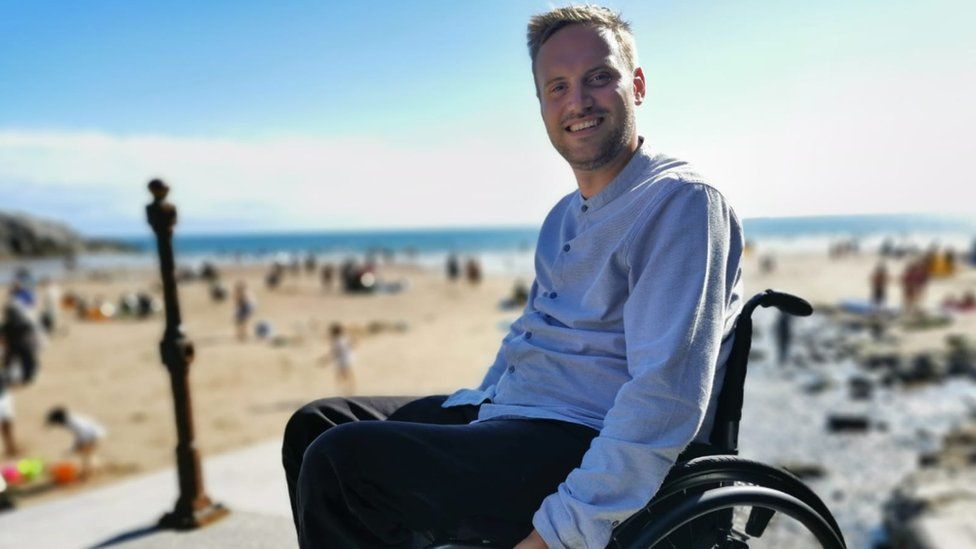
-
-
Paralysed girl gets pioneering rehab to walk again
-
2 March 2022
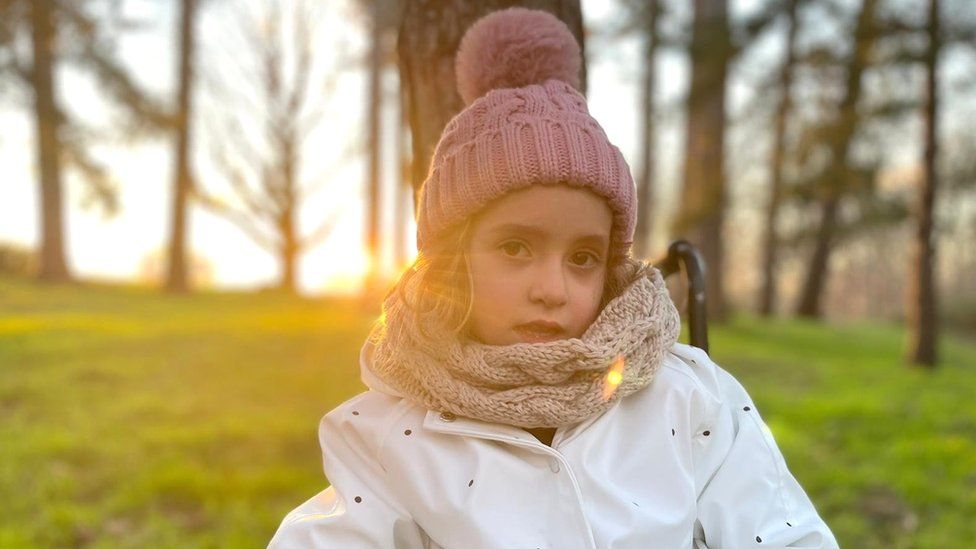
-
